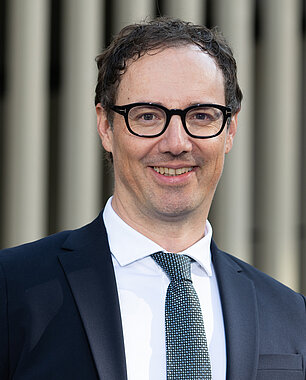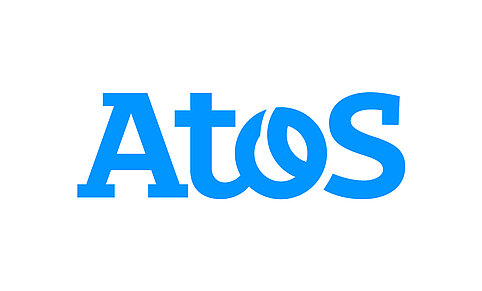 © Novartis Austria
© Novartis Austria
- Life Sciences
- Success story
Novartis Austria – The best site to produce biopharmaceuticals is Austria
17. October 2022The history of the Novartis plants in Tyrol dates back to its very beginning in the year 1946. Today the Campus in Kundl and Schaftenau is the biggest and most innovative Novartis site for the production of biopharmaceuticals in both Austria and globally. Employees from some 50 nations work here. Novartis is currently investing € 500 million to expand its cell culture technology in the coming years. The two new factories will be ready to be put into operation in the near future, namely in the summer of 2024 in Schaftenau and in the autumn of 2025 in Kundl. The expansion programme will create approx. 350 new jobs.
Questions posed to Roland Gander, Global Head for Large Molecules / Cell & Gene Therapies and Managing Director, Novartis Pharmaceutical GmbH
Novartis has shown an unbelievable success story in Austria. From your point of view which factors have enabled this development in Austria?
There is no doubt that a wide range of factors have contributed to the unique success story of Novartis in Austria. This goes back to the year 1946, when the former brewery was converted into a penicillin plant. With this experience under our belts, we entered the field of modern biotechnology (biosimilars, biopharmaceuticals) at a very early stage. The go ahead for the production of biopharmaceuticals in Kundl already took place in 1979. Accordingly, biopharmaceuticals were manufactured for the first time using microbial processes.
Today, the Campus Kundl/Schaftenau is the largest and most innovative Novartis facility for the development and production of biopharmaceuticals, both within Austria and across the globe. The Group continues to rely on Austria for development and manufacturing. At present, two new cell culture facilities are being created at the two traditional Novartis sites in Tyrol, namely in Kundl and Schaftenau. This is happening within the context of a global investment drive to increase biopharmaceutical production capacities. The related investments of € 500 million will create about 350 new jobs.
Innovative strength is the most important factor for me, in conjunction with the willingness to further develop oneself continuously. Our employees in Kundl and Schaftenau have been living this mindset for generations.
I am especially proud of the fact that the company’s business location in Tyrol has repeatedly redefined itself, which can only happen on the basis of innovations developed and implemented in Kundl and Schaftenau. One continually took what already existed, further developed it, and created new innovations from it.
On balance, Novartis has invested close to € 2 billion in property, plant, and equipment since 2015. Which prerequisites do you find in Austria so that these trailblazing steps could be taken in the heart of Europe?
Similar to any other business location, the business location of Austria has its advantages and disadvantages. In our capacity as Novartis in Austria, we are the central development and production site today specialising in biotechnologically produced drugs – from research and development to production. Like many other sectors, the pharmaceutical industry is subject to strong international competition, with cost efficiency serving as a fundamental premise. Competition not only exists with other companies but also with other sites within the Novartis Group, especially in connection with medium-term and long-term investment decisions.
For us, a particularly important key factor is the availability of highly qualified employees. At present, we have a workforce of about 3,300 employees, of whom some 3,000 are in Kundl and Schaftenau alone. Attracting and retaining well-qualified staff in the long term is a major challenge for us, which is why we have long been recruiting (and have had to recruit) from people beyond Austria’s borders. At present, we are looking for more than 100 new colleagues due to our robust growth. People from more than 50 nations work at our plants in Tyrol, something we are quite proud of.
We consider diversity to be highly enriching, and not just from a cultural perspective, and actively promote it. In particular, we have learned that a diverse and international educational offering is an important decision-making criterion for our future employees. An international school exists in Kufstein, in close proximity to the Novartis plants. It offers a comprehensive educational offering, from lower classes to the International Baccalaureate.
As one of Austria’s leading innovative pharmaceutical companies, Novartis is currently conducting more than 40 clinical studies. To what extent has relevant funding such as the research premium impacted the company’s investment decisions in the business location of Austria?
Incentives such as the research premium are necessary signals and can help decisively shape the last metres of making decisions on potential investments. Ultimately, the company’s headquarters in Basel approves the funding for investments. This means that our Campus in Austria competes for investments with all other countries within the Group. Simply put, we share a common goal with Austrian policy makers i.e., to attractively design the business environment so that corporate headquarters decides in favour of Austria at the end of the day. In this regard, I would like to mention the fact that we here at Novartis have made a disproportionately high level of investments in Austria compared to the size of our country.
By opening the Campus Kundl/Schaftenau to other companies, Novartis reaffirmed its commitment to Austria. This also applies to expanding the Kundl site to serve as its competence centre for nucleic acid production. How do you rate Austria as a life sciences location in an international comparison?
Our Life Science Campus in the west of Austria offers an excellent infrastructure, which effectively connects Tyrol with neighbouring metropolitan areas and countries such as Southern Germany, Switzerland, and Northern Italy. These advantages include excellent traffic and transport links, a pulsating business location (Inntal Valley) along with a stable political environment. This is complemented by a first-class infrastructure, an attractive labour market and extensive possibilities to spend one’s free time outdoors. The Technology Campus Tirol is an attractive environment with outstanding, internationally recognised research institutes and universities.
The business location of Austria has considerable potential. Many pharmaceutical and life sciences companies are already operating here in the country. Together with strong universities and favourable conditions, Austria could become a central innovation player in the European Union and in the world.
Do you have wishes for the Austrian business location or ABA?
If we also want to be successful in the future, we will have to begin thinking about health along the entire value chain. The pandemic impressively illustrated the social and economic value of health. Entire nations became “vulnerable” overnight. We need a new collaborative mindset on the part of all system players in order to take an integrated approach to business location policy in Austria. The pandemic also showed how decisive it is to strengthen innovation and production in Europe enabling it to act more independently of economic powerhouses such as China, India and the USA.
I am concerned that these major conclusions will soon be forgotten, and we will once again be surprised in the future in line with the motto, “If only we had done things differently.” This should not be allowed to happen.
How do ABA and the business promotion agency in Tyrol support you?
In particular, we cultivate an intensive collaboration with Standortagentur Tirol and ABA with respect to opening our site in Kundl/Schaftenau to external companies and establishing a life sciences park. ABA supports us in a variety of ways, especially due to its excellent network and the related possibilities to target advertisers.
One final question: what do you personally appreciate the most about Austria?
The combination of legal certainty and social peace.
About Novartis Austria
Novartis is rethinking medicine, in line with its mission to improve and extend people’s lives. With its facility for innovative medicine in Vienna and the development and production centres in Kundl/Schaftenau in Tyrol, Novartis is one of the leading innovative pharmaceutical companies in the country. Investments in research and development underpin the company’s commitment to solve several of the toughest problems faced by society when it comes to healthcare through science-based innovations. You can find further information at http://www.novartis.at/http://www.novartis.at/ () and also at LinkedIn: NovartisÖsterreichNovartisÖsterreich ()
More Success Stories



